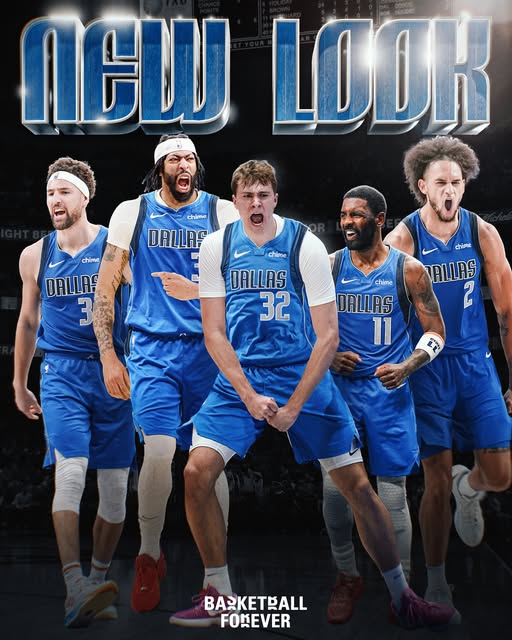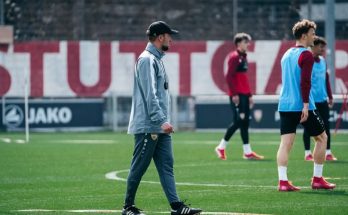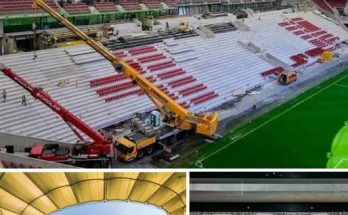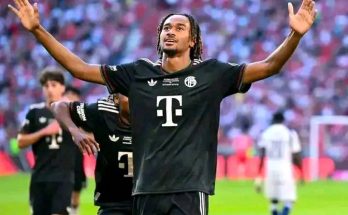When Nico Harrison took the reins as general manager of the Dallas Mavericks in 2021, skepticism was heavy in the air. With a background in Nike’s executive suite and no traditional front office experience in the NBA, many wondered if Harrison was the right man to help build around Luka Dončić and elevate the Mavs into a perennial contender. Fast-forward to the present day, and those doubts have dissolved into awe.
NBA insider Shams Charania recently sent shockwaves through the basketball world when he declared, “Nico Harrison has built arguably the best front line in the NBA.” Coming from one of the most plugged-in voices in the sport, the praise was not only bold—it was backed by facts, film, and frightening potential. The Mavericks’ front line, anchored by stars like Dereck Lively II, P.J. Washington, and the newly acquired Daniel Gafford, has become a devastating combination of length, versatility, athleticism, and rim protection. And it’s the culmination of Harrison’s meticulous, often underrated maneuvering.
In an era where small-ball lineups and positionless basketball often steal the headlines, the Mavericks have zagged where others have zigged. Instead of sacrificing size for speed, Harrison has built a frontcourt that does both—playing big while moving like a guard unit, and imposing physicality on both ends. It’s a unit that bludgeons the boards, clogs the paint, and punishes mismatches on the interior. But it didn’t happen overnight.
The evolution of Dallas’ front line began with a brutal reality check in 2023. The Mavericks stumbled to a disappointing finish, missing the playoffs despite having two elite guards in Dončić and Kyrie Irving. The glaring issue wasn’t shot creation or perimeter scoring—it was everything inside the arc. Dallas was dead last in rebounds per game and ranked near the bottom in points allowed in the paint. Opposing bigs feasted nightly, and the Mavs had no real rim deterrent.
Harrison recognized the flaw with precision. Rather than panic, he made a series of calculated decisions that reshaped the roster’s identity without jeopardizing the team’s long-term flexibility. His first major move came in the 2023 NBA Draft, where Dallas selected Dereck Lively II, a 7’1″ shot-blocking center out of Duke. At the time, some viewed it as a developmental pick. Lively quickly proved otherwise. With explosive leaping ability, impeccable timing, and a hunger for defensive dominance, Lively became one of the NBA’s most impactful rookies. His chemistry with Dončić in the pick-and-roll emerged immediately, and his ability to alter shots without fouling gave Dallas the anchor it so desperately needed.
But Harrison wasn’t done.
Recognizing that one elite defensive big was a good start—but not enough to compete with the West’s deep frontcourts—he made a bold trade at the 2024 deadline. Dallas acquired Daniel Gafford from the Washington Wizards in a deal that flew under the radar at the time but has since become one of the season’s most consequential. Gafford brought another layer of rim protection, elite offensive rebounding, and tenacity. Like Lively, he possessed a knack for vertical spacing and rim running—making it nearly impossible for opposing defenses to contain both bigs when they shared the floor or rotated in tandem.
With Lively and Gafford forming a two-headed monster in the paint, Harrison turned his attention to the four spot. Enter P.J. Washington. Acquired in a separate mid-season trade, Washington offered the Mavs a rare blend of size, defensive versatility, and stretch shooting. He could switch onto guards, battle with forwards, and hit the corner three with confidence. His addition gave the Mavericks a true modern forward—a player who could plug multiple gaps depending on the matchup.
Individually, each of these players brings unique strengths. But it’s the collective synergy Harrison envisioned that has taken the NBA by storm. Lively and Gafford have the length and mobility to alter shots on the perimeter and recover at the rim. Washington provides the perfect bridge between frontcourt toughness and wing versatility. Together, they form a unit that can defend in space, dominate the glass, and punish undersized teams on the interior. It’s no wonder Dallas surged to the Western Conference Finals, and it’s no surprise that Shams made such a declaration.
This front line’s brilliance isn’t just in numbers—it’s in the way they impact the geometry of the game. Teams that previously attacked the Mavericks with confidence now think twice before entering the paint. The lob threat from both Gafford and Lively opens lanes for Dončić and Irving. Opposing offenses are often pushed into low-efficiency mid-range shots, while the Mavericks thrive in transition off rebounds and blocks. It’s a virtuous cycle, and at the center of it is Harrison’s vision.
What sets Harrison apart is not just talent evaluation, but context-driven team building. He didn’t chase big names for headlines. Instead, he studied how elite teams like Denver (with Nikola Jokić), the Lakers (with Anthony Davis), and Milwaukee (with Giannis and Brook Lopez) won games through frontcourt dominance—and then tailored that idea to Dallas’ unique roster. He built around Dončić’s strengths while masking his defensive limitations. He found players who would play hard, embrace their roles, and stay hungry.
Perhaps most impressive is the age and contract situation of Dallas’ front line. Lively is still on a rookie deal, and Gafford’s extension is team-friendly considering his output. Washington’s deal fits neatly into the Mavs’ salary structure, giving them rare financial flexibility for a contender. This isn’t just a temporary build—it’s sustainable. And it’s terrifying for the rest of the league.
Critics who once questioned Harrison’s qualifications have gone quiet. In just three seasons, he’s flipped the narrative from “Nike executive turned GM” to “architect of the West’s most physically imposing defense.” He’s built a team that no one wants to see in a playoff series. And he’s done it with precision, patience, and vision—traits that often go unnoticed until the results become impossible to ignore.
Shams Charania’s statement might seem hyperbolic at first glance, but the evidence is undeniable. The Mavericks have the best one-two center punch in the NBA, flanked by a modern, switchable four, all supporting two All-NBA-caliber guards. It’s a blueprint that has taken years to fine-tune, and now it’s on the brink of becoming a dynasty core.
The NBA, as always, is a copycat league. Expect teams to start hunting for their own Gaffords, Livelys, and Washingtons. But replicating the Mavericks’ front line won’t be easy—because it wasn’t just talent that made it elite. It was the foresight, fit, and flexibility that Nico Harrison prioritized from day one.
As the Mavericks look ahead to another deep playoff run and potentially their first Finals appearance since 2011, the front line will remain the backbone. They may not be the flashiest trio in the league, but they’re the most impactful where it matters most—in the trenches. On the boards. In the paint. At the rim.
Nico Harrison didn’t just build a great front line—he redefined what greatness in the frontcourt can look like in today’s NBA.



